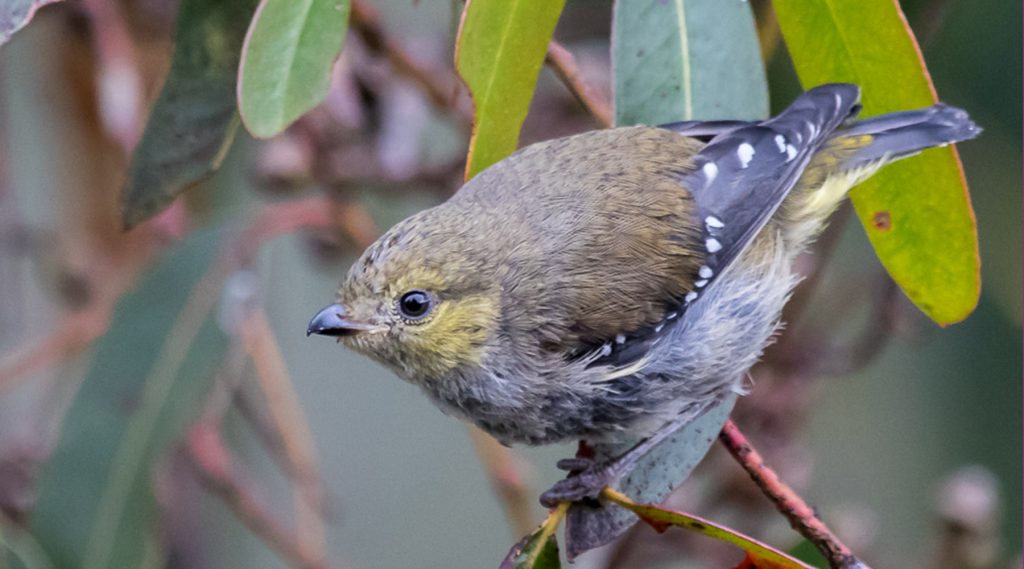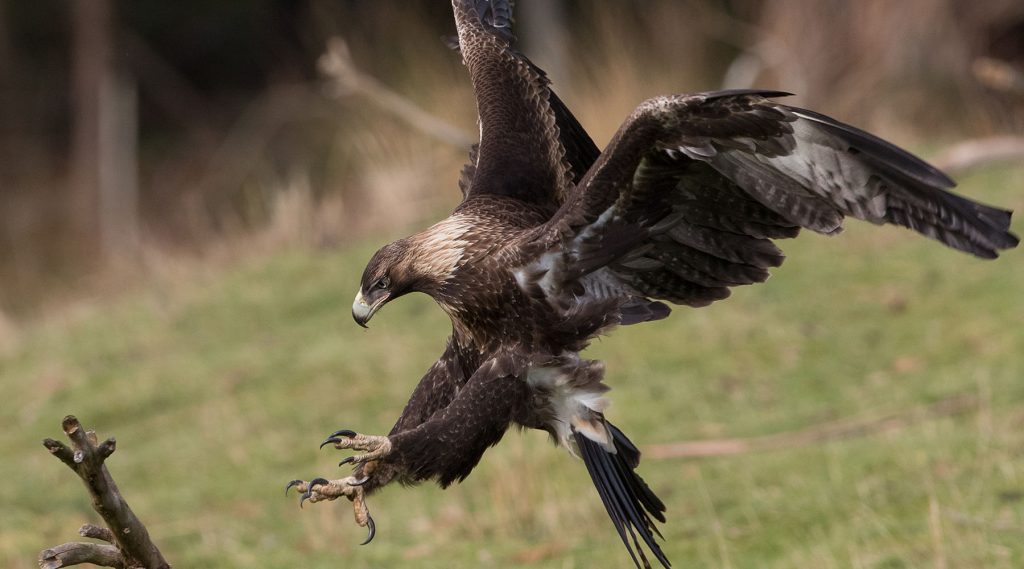There’s good reason Inala draws people from all corners of the globe to a 1500-acre haven on Bruny; an island that’s home to Tasmania’s 12 endemic bird species and so much more.
It’s a buzz word that’s common these days. We need to be more ‘mindful.’ Folk plug into mindful apps, they perhaps chew their food more slowly or try really hard to be in the present moment. Inala Nature Guide, Cat Davidson, feels that birds have a knack for inviting a mindful state that far surpasses any downloadable prompt.
“Today, birders are not at all the image people have of an old-fashioned twitcher. Birders are everybody. People are finding birds through many different ways, especially now we all wish to engage with nature more. When people say they’re going to go and be mindful, what they often end up doing is going outside and watching the birds for a while and feeling genuinely better about life,” smiles Cat. “The beauty, songs and movements of birds irresistibly lead into us seeking out nature. Most find a connection with birds very quickly when they are open to it. It allows them to feel mindful and present, by simply listening, watching and being.”
In the south of Bruny, visitors to Inala can get their mindful fix at the only private reserve of its kind in the country. It’s no ordinary property. Founded by Dr. Tonia Cochran more than three decades ago, the family-owned company runs birding and wildlife tours on this conservation reserve as well as other locations across Australia and beyond. Dr. Tonia is a qualified biologist (Bachelor of Science in Botany and Zoology with Honors and PhD degrees in Zoology) and has gathered a team ranging from scientists and ecologists to travel experts.
“Conservation underpins everything we do here at Inala. Whether we are running a wildlife tour or a community workshop, collaborating with other stakeholders to help protect threatened flora and fauna or whether we are undertaking projects through the Inala Nature Foundation, we are always mindful of a positive conservation and educational outcome,” says Dr. Tonia.
Inala is a refuge for various endangered species. It’s home to the largest colony of Forty-spotted Pardalotes known on Bruny and is a haven for critically endangered Swift Parrots. The team are passionate about conservation and revenue from tours help support projects and orphaned animals through the Inala Nature Foundation.

“There are less than 1000 Forty-Spotted Pardalotes left in Tasmanian and on Bruny we have a significant proportion of that thousand. On Inala we have at least 100 living here,” adds Cat. “Swift Parrots feed on our blue and black gums and live in Inala tree hollows. Trees often need to be at least 100 years old to start developing hollows that will be suitable for Swift Parrots, which is why we’ve also supplemented hollows with manmade nest boxes to help save the species.”
Visitors can book tours at Inala and even stay onsite immersed in the wildlife habitat with its world-class photography hides and canopy platforms for spotting rare species including raptors like the Wedge-Tailed Eagle. Those without a booking can explore the five-acre Jurassic Garden and Nature Museum with its collection of fossils, rare shells, minerals and historic specimens.
Inala, an indigenous word meaning ‘peaceful place’ is fitting. It’s hard not to feel calm when wandering the garden with more than 750 Southern Hemisphere species and tuning into bird calls. Guests can also deep dive into the Gondwanan connections – living plants with ancient ancestors that thrived during Jurassic times when the Gondwanan Supercontinent began to split some 185 million years ago forming Australia.
“Since 2010 Inala has partnered with the Bruny Island Environment Network and BirdLife Tasmania to run the biannual Bruny Island Bird Festival, a beautiful way to celebrate the four festival pillars of science, conservation, community and creativity. The aim of the festival has always been to engage the local community with nature as much as it’s ever been to attract additional people. There’s an art exhibition, a nature market, renowned speakers, guided tours, and more. It’s educative as well as a celebration of the island, the richness of the habitat and the diversity of birdlife,” describes Cat who coordinates the festival.
It’s not just humans that travel the globe to come to Bruny Island. Short-tailed Shearwaters (mutton birds) travel from the islands off Alaska to breed on Bruny. These shorebirds have nests throughout Bruny’s coastlines, so it’s always important to tread lightly, particularly on the island’s beaches and dunes.
“The shearwaters are remarkable,” explains Cat. “They go far offshore depending on where the best food source is. Sometimes it can be many days of flying to get a decent meal. They might be just over the horizon, but they may go all the way down to Antarctic waters to find food for their chicks back on Bruny Island.”
Those who stop at The Neck, might notice Little Penguin and shearwater burrows (holes in the ground) nearby. It’s important to respect the homes of these mighty little birds and a visit to Inala delivers a whole new level of insight and awareness, along with the other 12 endemic species and island wildlife.
“Our daily message centres around the fragility and uniqueness of nature that we have here on Bruny,” concludes Cat. “In addition to experiencing the beauty and feeling the joy of connecting with and understanding nature, it is also all our duty to look after Bruny and its wildlife; to respect and protect it. Inala is committed to this conservation vision and celebrating what we have here.”

There are 97 bird species found at Inala including:
Tasmania’s 12 Endemic Species